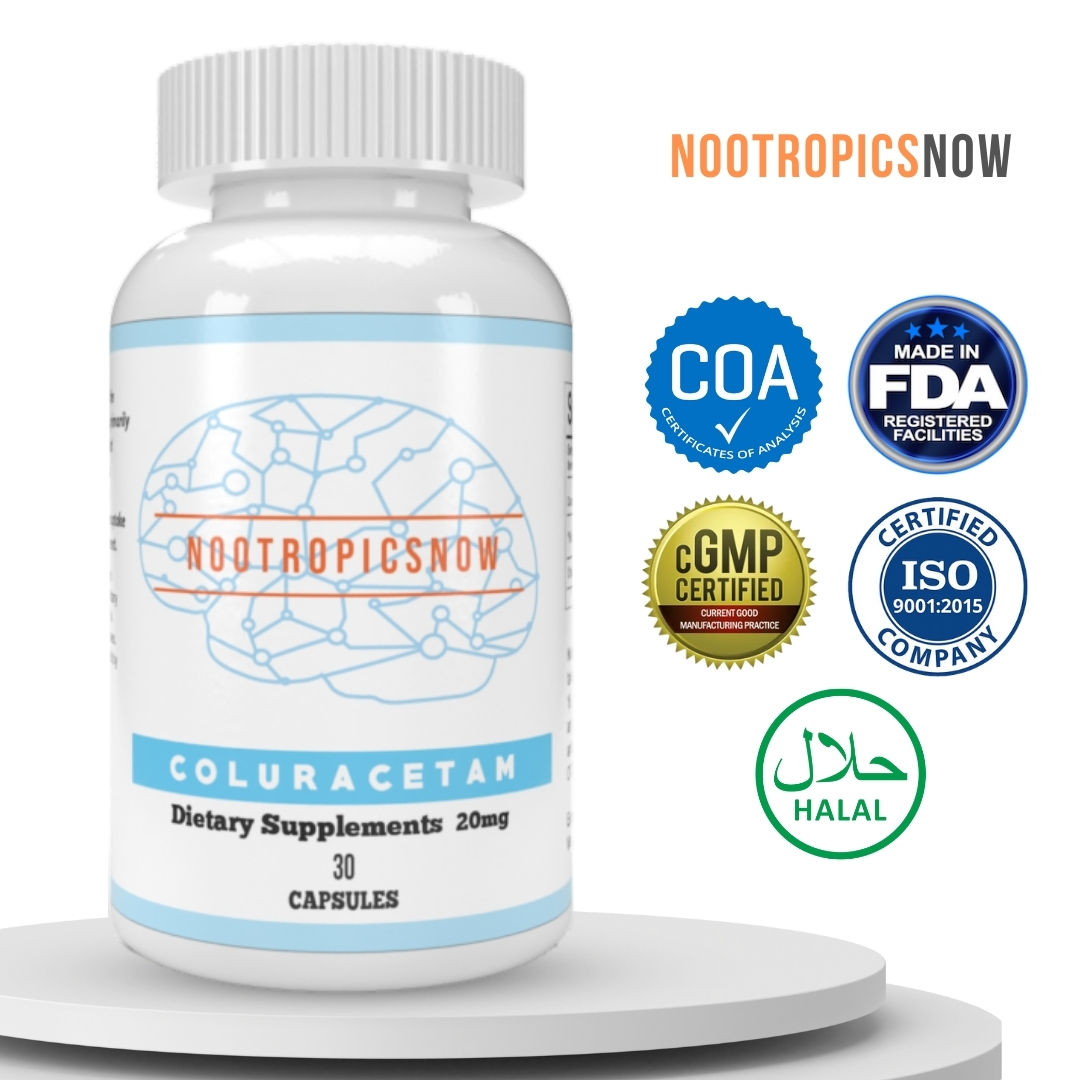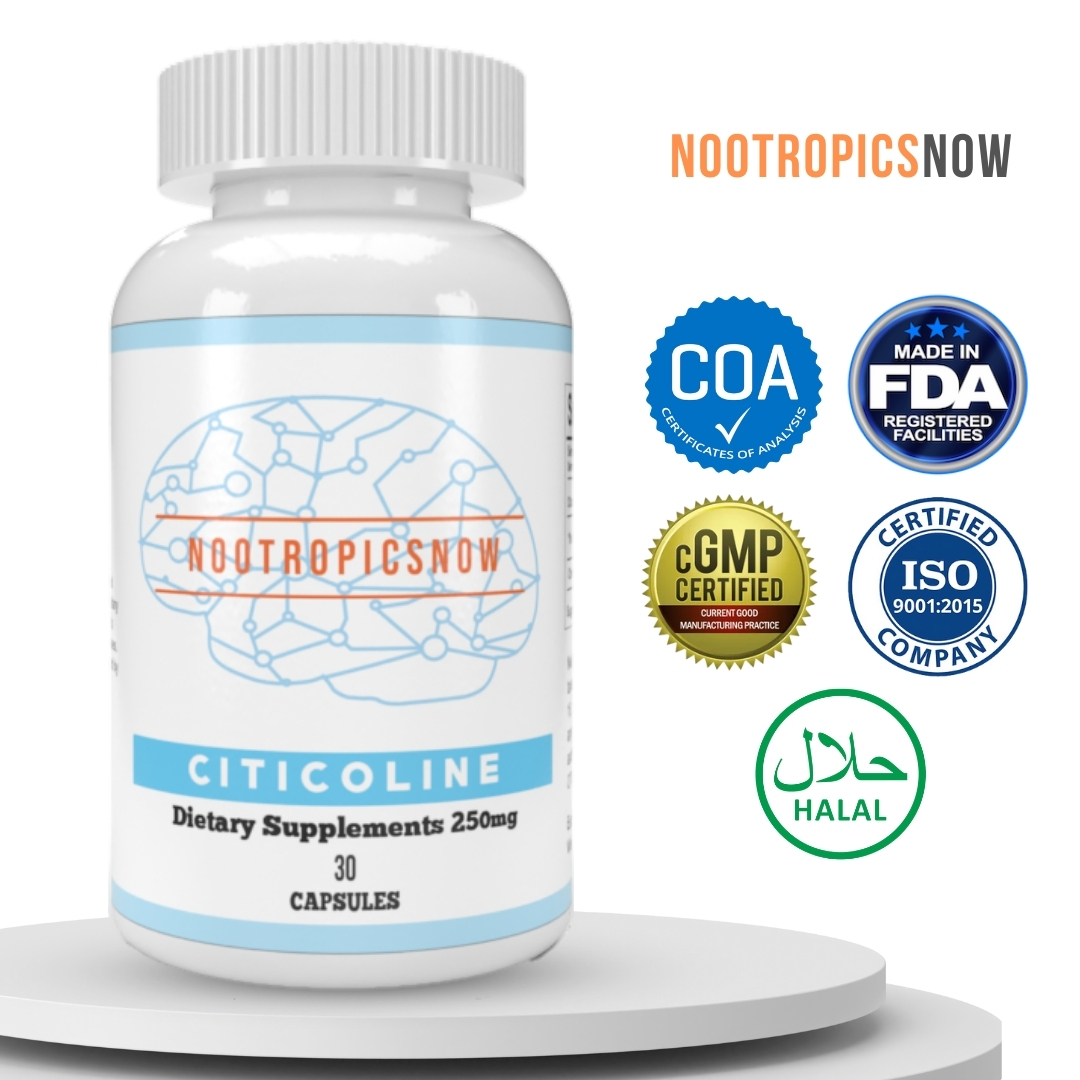Piracetam Uses: Benefits & Side Effects

`markdown
Piracetam Uses: A Comprehensive Overview
Piracetam, first synthesized in 1964, represents the pioneering compound of the racetam family of nootropics. Its primary function revolves around enhancing cognitive abilities, and it’s been investigated for a variety of neurological and cognitive conditions. This comprehensive overview explores the various piracetam uses, detailing its potential benefits, mechanisms of action, and safety considerations.
Cognitive Enhancement: Boosting Brain Function
Piracetam’s most prominent use lies in its ability to enhance cognitive function. This includes improvements in memory, learning capacity, and overall mental clarity. Consequently, it has garnered attention from students, professionals, and individuals seeking to optimize their cognitive performance.

View Product
Memory Improvement
One of piracetam’s primary benefits is its potential to improve memory. It facilitates both the formation of new memories and the recall of existing ones. Studies suggest it increases the brain’s sensitivity to acetylcholine, a neurotransmitter crucial for memory and learning processes. Thus, users often report enhanced ability to retain and retrieve information.
View Product
Enhanced Learning Capacity
Piracetam can improve learning capacity by increasing focus, attention span, and the ability to process new information. These effects can be particularly beneficial for individuals engaged in academic pursuits or those requiring continuous learning in their professions. Some studies demonstrate improved verbal learning in individuals taking piracetam.
View Product
Improved Focus and Concentration
By modulating neurotransmitter activity, piracetam can enhance focus and concentration levels. This can translate to improved productivity, particularly in tasks requiring sustained mental effort. Many users find that they can maintain their attention for longer periods, resist distractions, and complete tasks more efficiently.
View Product
Cognitive Function in Healthy Individuals
Although primarily studied in individuals with cognitive impairments, research suggests piracetam may also provide cognitive benefits to healthy individuals. Studies indicate improvements in verbal learning and memory in healthy participants. More research is needed, however, to fully understand its effects in individuals without pre-existing cognitive deficits.
Neurological Disorders: Addressing Brain-Related Conditions
Beyond general cognitive enhancement, piracetam has been explored as a treatment for a variety of neurological disorders. Its potential to modulate brain activity and improve neuronal function makes it a promising candidate for managing conditions affecting the nervous system.
Myoclonus Treatment
One of the most well-established uses of piracetam is in the treatment of myoclonus, a neurological condition characterized by sudden, involuntary muscle jerks. It has been shown to reduce the frequency and severity of myoclonic episodes, significantly improving the quality of life for affected individuals. Specifically, cortical myoclonus responds well to piracetam treatment.
Epilepsy Management
While not a primary treatment for epilepsy, piracetam has demonstrated anticonvulsant properties, suggesting potential benefits in managing certain types of seizures. It may help reduce the frequency and severity of seizures when used in conjunction with other anticonvulsant medications. Further research is required to clarify its specific role in epilepsy management.
Vertigo and Balance Issues
Piracetam may help alleviate symptoms of vertigo and improve balance. This is thought to be due to its ability to improve blood flow to the brain and reduce the adhesion of red blood cells, thereby improving inner ear function and reducing dizziness. Studies have shown significant improvement in vertigo symptoms among users.
Stroke Recovery
Research suggests piracetam might aid in recovery following a stroke. It promotes neuroplasticity, enabling the brain to reorganize itself and compensate for damaged areas. Early studies show improved motor function and cognitive abilities among stroke patients treated with piracetam.
Cognitive Decline and Dementia
While not a cure for dementia, piracetam is investigated for its potential to slow cognitive decline associated with conditions like Alzheimer’s disease. Studies suggest it may improve memory and overall cognitive function in individuals with mild to moderate dementia. Nevertheless, the results have been mixed, and more extensive clinical trials are necessary.
Learning Disabilities: Aiding Children with Dyslexia

Piracetam’s cognitive-enhancing properties make it a potential aid for individuals with learning disabilities, particularly dyslexia. Preliminary research indicates that piracetam may improve reading skills and comprehension in children with dyslexia. However, more research needs to be conducted to validate these findings and determine optimal dosages and treatment durations.
Improved Reading Abilities
Piracetam can help improve reading fluency, accuracy, and comprehension in dyslexic children. This improvement might be attributed to its ability to enhance information processing speed and auditory discrimination, thereby addressing some of the underlying challenges faced by individuals with dyslexia.
Potential Benefits in Other Learning Disorders
Although primarily investigated for dyslexia, piracetam may potentially benefit individuals with other learning disorders characterized by cognitive deficits, such as ADHD. By improving focus, attention, and memory, it could help mitigate some of the challenges associated with these conditions. More research is necessary to explore these potential applications.
Surgical Applications: Enhancing Post-Operative Outcomes
Piracetam is increasingly used in surgical settings to improve cognitive outcomes after procedures, particularly those involving anesthesia or significant physiological stress. Its neuroprotective properties may help mitigate cognitive decline associated with surgery.
Coronary Artery Bypass Grafting (CABG)
Piracetam has shown promise in reducing the incidence of cognitive dysfunction following coronary artery bypass grafting (CABG) surgery. It is hypothesized that it helps protect brain cells from damage due to reduced blood flow during surgery, leading to better post-operative cognitive outcomes. Studies have demonstrated significant improvements in memory and executive functions.
Reduction in Postoperative Delirium
Postoperative delirium, characterized by confusion and disorientation, is a common complication, especially in elderly patients. Piracetam has been explored as a way to reduce the risk of this condition. Its anti-inflammatory and neuroprotective effects may contribute to its efficacy in preventing delirium after surgery.
Other Medical Applications: Addressing Specific Health Issues
Beyond the primary cognitive and neurological uses, piracetam has been investigated for a range of other medical conditions, indicating its broad potential therapeutic value.
Sickle Cell Anemia
Piracetam has been investigated for its potential to manage complications associated with sickle cell anemia, a genetic blood disorder causing red blood cells to become sickle-shaped and rigid. Piracetam’s ability to improve red blood cell deformability and reduce adhesion to blood vessel walls may help alleviate pain crises and reduce the risk of vaso-occlusive events.
Macular Degeneration
Some research suggests that piracetam may improve visual acuity and slow the progression of age-related macular degeneration (AMD), a leading cause of vision loss in older adults. This benefit is thought to be associated with its ability to improve blood flow to the retina and protect retinal cells from damage.
Alcohol Withdrawal Symptoms
Piracetam has been explored as a treatment for reducing alcohol withdrawal symptoms. By modulating brain activity and improving cognitive function, it may help alleviate anxiety, agitation, and cognitive impairments associated with alcohol withdrawal.
Mechanism of Action: How Piracetam Works
Piracetam’s exact mechanism of action is not fully understood, yet it is believed to exert its cognitive and neuroprotective effects through several key pathways.

View Product
Modulation of Neurotransmitters
Piracetam is known to modulate the activity of various neurotransmitter systems, particularly the cholinergic and glutamatergic systems. It enhances acetylcholine release and increases the number of acetylcholine receptors, thus improving cholinergic neurotransmission. This is particularly relevant for its memory-enhancing effects.

View Product
Improvement of Cell Membrane Fluidity
Piracetam enhances the fluidity of cell membranes, allowing for improved communication between neurons. Fluid cell membranes are crucial for efficient signal transmission across synapses, improving overall brain function. It facilitates easier and faster transfer of signals within the brain.
Enhanced Brain Metabolism
Piracetam enhances brain metabolism, increasing glucose and oxygen utilization. This can provide the brain with more energy, supporting cognitive functions and enhancing neuronal activity. This supports overall brain vitality and efficient operation.
Neuroprotective Properties
Piracetam has neuroprotective properties, shielding brain cells from damage caused by various insults such as oxidative stress and excitotoxicity. It achieves neuroprotection by reducing the production of free radicals and promoting the survival of neurons under stressful conditions.
Dosage and Administration: Safe and Effective Usage
The appropriate dosage and administration of piracetam can vary depending on the intended use and individual factors.
Recommended Dosage Range
The typical dosage of piracetam ranges from 1.6 grams to 4.8 grams per day, usually divided into two or three doses. It is crucial to start with a lower dose and gradually increase as needed. Consulting with a healthcare professional to determine the appropriate dosage for individual requirements is advisable.
Timing and Frequency
Piracetam is usually taken orally, with or without food. It is recommended to divide the daily dose into multiple administrations throughout the day to maintain stable blood levels. It is advisable to avoid taking piracetam late in the evening, as it may interfere with sleep in some individuals.
Combining with Choline Sources
Some users combine piracetam with choline sources, such as choline bitartrate or alpha-GPC, to prevent potential side effects like headaches. This is because piracetam increases acetylcholine utilization in the brain, and supplementing with choline can ensure sufficient acetylcholine availability.

View Product
Safety and Side Effects: Potential Risks and Considerations
Piracetam is generally considered safe and well-tolerated. Still, like any medication, it can cause side effects in some individuals.
Common Side Effects
Common side effects of piracetam may include:
These side effects are typically mild and transient. Reducing the dosage or discontinuing use can usually resolve them.
Rare Side Effects
Rare side effects of piracetam may include:
Anyone experiencing any of these rarer side effects should immediately discontinue use and seek medical attention.
Contraindications and Precautions
Piracetam is contraindicated in individuals with:
It should be used with caution in individuals taking anticoagulant or antiplatelet medications, as it may increase the risk of bleeding. Also, pregnant or breastfeeding women should avoid using piracetam due to the lack of sufficient safety data in these populations.
Regulatory Status: Legal Considerations
The regulatory status of piracetam varies widely across different countries. It is available as a prescription medication in some countries (e.g., certain European countries) for specific medical conditions like myoclonus. In other countries, such as the United States, piracetam is not approved by the FDA for any medical use and is often sold as a dietary supplement. This regulatory status can impact its availability and accessibility depending on your location.
Research Limitations and Future Directions
While there is substantial research on piracetam, certain limitations affect its overall evaluation, and ongoing research attempts to clarify its effectiveness and potential uses. These limitations include a lack of standardization across studies, variations in dosage and duration, and a need for more extensive and well-designed clinical trials. Future research should address these limitations to more definitively establish the efficacy and safety of piracetam for various conditions.
Conclusion: Exploring the Potential of Piracetam
Piracetam, a pioneering nootropic, has shown promise in enhancing cognitive function and managing neurological disorders. Its potential benefits span from improving memory and learning capacity to assisting with conditions such as myoclonus and dyslexia. While generally safe and well-tolerated, users should be aware of potential side effects and contraindications. As research continues to evolve, the therapeutic role of piracetam is likely to become clearer, potentially providing new avenues for cognitive enhancement and the management of various medical conditions.
`
Piracetam Uses: A Comprehensive Overview
Piracetam, a synthetic molecule belonging to the racetam family, holds a significant place in the world of nootropics. Initially synthesized in 1964 by Corneliu E. Giurgea, piracetam has been extensively studied for its potential cognitive-enhancing properties and therapeutic applications. Its primary function revolves around modulating neurotransmitter activity and improving neuronal membrane permeability. This section delves into the multifaceted uses of piracetam, examining both its established applications and areas where research continues to explore its benefits.
Cognitive Enhancement and Memory Improvement
At its core, piracetam is renowned for its cognitive-enhancing effects, primarily targeting memory and learning capabilities. By enhancing the fluidity of neuronal cell membranes, piracetam facilitates more efficient signal transmission between nerve cells. This, in turn, can lead to enhanced memory formation, improved recall speed, and an overall increase in cognitive processing abilities. Consequently, students, professionals, and older adults have been observed to experience positive outcomes with regular use.
Impact on Memory: Studies have shown that piracetam can improve both short-term and long-term memory. These benefits are thought to be mediated by the increased synthesis and utilization of acetylcholine, a neurotransmitter critical for memory and learning processes. The enhanced cholinergic activity supports improved cognitive performance across various tasks.

View Product
Effects on Learning: Beyond memory, piracetam also aids in the learning process by enhancing the brain’s ability to integrate new information. Its mechanisms facilitate better comprehension and retention, proving especially useful in educational and professional settings where continuous learning is paramount. Users often report enhanced focus, improved concentration, and a heightened ability to absorb and process complex information.
Treatment of Cognitive Decline and Neurodegenerative Diseases
Piracetam has been investigated for its potential in managing cognitive decline associated with aging and neurodegenerative diseases such as Alzheimer’s disease and dementia. Although not a cure, piracetam may offer symptomatic relief and slow the progression of cognitive impairment.
View Product
Alzheimer’s Disease: In individuals with Alzheimer’s, piracetam has shown some promise in improving cognitive function and enhancing daily living activities. Clinical trials have suggested that piracetam can lead to modest improvements in memory and attention, although results vary among individuals. These improvements are significant, as they enhance the quality of life for both patients and caregivers.
Dementia: Similarly, studies have explored the use of piracetam in treating various forms of dementia, including vascular dementia and age-related cognitive decline. The rationale behind its use lies in its ability to improve cerebral blood flow and protect neurons from oxidative stress, which are both crucial in maintaining cognitive health. By enhancing blood flow and neuronal protection, piracetam may help stabilize cognitive abilities and reduce the rate of decline.
View Product
Age-Related Cognitive Decline: Furthermore, piracetam has been considered as a supportive treatment for age-related cognitive impairment, even in the absence of a specific diagnosis like Alzheimer’s or dementia. Older adults experiencing normal age-related memory loss may find piracetam helpful in maintaining cognitive function and overall mental sharpness.
Management of Myoclonus and Epilepsy
Piracetam’s therapeutic properties extend beyond cognitive enhancement, demonstrating efficacy in managing neurological disorders such as myoclonus and epilepsy.
Myoclonus: Myoclonus, characterized by involuntary muscle jerks, can be debilitating and affect the quality of life significantly. Piracetam has been shown to reduce the frequency and intensity of myoclonic episodes. Its mechanism involves modulating neurotransmitter release and enhancing neuronal stability, which helps control the abnormal electrical activity responsible for muscle spasms.
Epilepsy: While not a primary treatment for epilepsy, piracetam has been used as an adjunct therapy to manage certain types of seizures, particularly in cases where conventional anticonvulsants are not fully effective. Piracetam helps stabilize neuronal excitability, reducing the likelihood of seizure onset and improving overall seizure control.
Addressing Vertigo and Balance Disorders
Another established use of piracetam is in the treatment of vertigo and balance disorders. Vertigo, the sensation of spinning or dizziness, can result from various underlying conditions affecting the inner ear or brain.
Mechanism of Action: Piracetam works to alleviate vertigo symptoms by improving blood flow to the inner ear and central nervous system, which helps maintain proper vestibular function. The increased blood flow ensures adequate oxygen and nutrient supply to the sensory organs responsible for balance, thus reducing the sensation of dizziness and improving overall stability.
Clinical Evidence: Studies have demonstrated that piracetam can significantly reduce the frequency and severity of vertigo episodes, improving patients’ ability to perform daily activities without the fear of imbalance. This is particularly beneficial for individuals with chronic vertigo, who experience persistent symptoms affecting their mobility and quality of life.
Mitigation of Dyslexia and Learning Disabilities
Piracetam has also been explored as a potential aid for individuals with dyslexia and other learning disabilities. Dyslexia, a learning disorder characterized by difficulties with reading, spelling, and writing, can significantly impact academic and professional success.
Impact on Reading Skills: Research suggests that piracetam can improve reading comprehension and decoding skills in children and adults with dyslexia. By enhancing cognitive processing speed and memory, piracetam helps individuals better process written information and improve their reading accuracy.
View Product
Neuroplasticity and Learning: Piracetam’s ability to enhance neuroplasticity, the brain’s capacity to reorganize itself by forming new neural connections, is crucial in its effectiveness against dyslexia. Enhanced neuroplasticity enables individuals to develop alternative neural pathways to compensate for the deficits associated with dyslexia, leading to improved reading and learning outcomes.
Applications in Surgical Contexts
The use of piracetam extends to surgical environments, particularly in patients undergoing cardiac surgery.
Coronary Bypass Surgery: Studies have shown that administering piracetam before and after coronary bypass surgery can reduce the incidence of postoperative cognitive dysfunction, including delirium and memory impairment. Piracetam’s neuroprotective effects help mitigate the damage caused by surgical stress and anesthesia, promoting faster cognitive recovery.
Protection Against Cognitive Decline: Patients who receive piracetam during the perioperative period often exhibit better cognitive performance in the weeks and months following surgery, compared to those who do not receive the drug. This suggests that piracetam may offer long-term benefits in preventing cognitive decline associated with surgical procedures.
Potential Benefits for Other Conditions
Beyond the established uses, piracetam has been investigated for its potential benefits in various other conditions.
Sickle Cell Disease: Limited research suggests that piracetam may reduce the frequency and severity of vaso-occlusive crises in patients with sickle cell disease. Its ability to improve blood flow and reduce the adhesion of red blood cells may help prevent the painful episodes associated with this condition.
Traumatic Brain Injury: Piracetam’s neuroprotective properties make it a potential candidate for treating traumatic brain injury (TBI). By reducing neuronal damage and promoting recovery, piracetam may help improve cognitive outcomes and reduce long-term disability in TBI patients.
Dosage and Administration
The appropriate dosage of piracetam can vary depending on the specific condition being treated and individual patient factors. However, typical dosages range from 1.6 grams to 4.8 grams per day, usually divided into two or three doses. It is essential to consult with a healthcare professional to determine the optimal dosage and administration schedule.
Factors Influencing Dosage: Factors such as age, weight, kidney function, and concurrent medications should be considered when determining the appropriate piracetam dosage. Patients with impaired kidney function may require lower doses to avoid adverse effects.
Safety Profile and Potential Side Effects
Piracetam is generally considered safe and well-tolerated, but like any medication, it can cause side effects in some individuals. Common side effects include:
Contraindications: Piracetam is contraindicated in individuals with severe kidney impairment, Huntington’s disease, and those who are allergic to piracetam or other pyrrolidone derivatives. It should also be used with caution in pregnant or breastfeeding women.
Legal and Regulatory Status
The legal status of piracetam varies across different countries. In some countries, such as the United States, piracetam is not approved by the Food and Drug Administration (FDA) for any medical use. However, it is available for purchase as a dietary supplement. In other countries, such as the United Kingdom, piracetam is a prescription-only medication used for specific conditions like myoclonus.
Interaction with Other Substances
Piracetam can interact with other substances, potentially affecting their efficacy or increasing the risk of side effects. For example, piracetam may enhance the effects of anticoagulants, increasing the risk of bleeding. It is important to inform your healthcare provider about all medications, supplements, and herbal products you are taking before starting piracetam.
Alcohol: Combining piracetam with alcohol is not recommended, as it may increase the risk of central nervous system side effects such as drowsiness and dizziness.
Future Research Directions
While piracetam has been studied extensively, further research is needed to fully understand its mechanisms of action and potential therapeutic applications. Future studies should focus on:
In conclusion, piracetam is a versatile nootropic with a wide range of potential uses, from cognitive enhancement to the management of neurological disorders. While it is generally safe and well-tolerated, it is essential to use it under the guidance of a healthcare professional and be aware of potential side effects and interactions. Ongoing research continues to explore the full potential of piracetam and its role in improving cognitive and neurological health.

View Product

